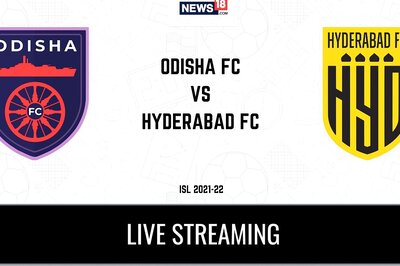
views
Is it the end of Narendra Modi wave and has the formula to stop the Bharatiya Janata Party juggernaut been finally found? With the Congress in the intensive care unit and refusing to swallow the bitter pill, BJP had been an upswing winning states after states and also bagging the Lok Sabha prize with a huge mandate in 2014 general elections.
Led by a confident Amit Shah, the party's National President, and Prime Minister Narendra Modi, the BJP had mastered the art of playing to its strength and pushing the opposition on the backfoot by its aggressive, development oriented campaign and the mass media blitzkrieg.
But with the Aam Aadmi Party delivering a knockout punch to the massive BJP election machinery in Delhi, the opposition parties are likely to learn valuable lessons from the verdict and come together in states where elections are due in the next few months.
Even though Delhi is unlike other states where caste and community loyalties play a major role, it has shown that people are put off by negative campaign and prefer a party and candidate with positive approach with local issues and promises to act on them the clincher.
After quitting as Delhi chief minister in 49 days and the disastrous Lok Sabha elections, AAP chief Arvind Kejriwal decided to stick to his party's base in Delhi. Faced with desertions, rebellions and charges of being an autocrat, the former Indian Revenue Service officer dug in his heels, rebuilt his party, gained the trust of not only his colleagues and supporters but also the neutral voter.
AAP leaders kept local and Delhi specific issues the focus of their campaign unlike the BJP which harped on national and even international events. Modi, BJP CM candidate Kiran Bedi and others even used US President Barack Obama's visit to lure the voters not realizing that in spite of being the national capital Delhi still needs better roads, sanitation, electricity, clean drinking water, educational schools.
The local issues were what made AAP the favourite in Delhi and in it is one of the big lessons for BJP.
Adopting a top down approach since the Lok Sabha election campaign BJP has not only been able to form the first single-party majority government at the Centre in 30 years but also went on to secure the top spot in Haryana, Maharashtra and Jharkhand while the party emerged as the second largest in Jammu and Kashmir.
In all the state elections since the Lok Sabha win, BJP has fought on the Narendra Modi card and credited him with the good show. Yet a careful scrutiny of the results in Haryana, Maharashtra, Jharkhand and Jammu and Kashmir shows that despite the tall claims the BJP won a majority on its own in only the first state while it could cross the majority mark in the second and third only with the help of its allies revealing the limitations of the Modi card in state elections where local leadership is much more important.
In Haryana the BJP bagged 47 seats in the 90-member Assembly to form government on its own but in Maharashtra and Jharkhand the party failed to cross the halfway mark on its own. In Maharashtra, BJP emerged as the single largest party with 123 seats which is 22 short of the halfway mark in the 288-member Assembly and could form the government only with the help of Shiv Sena.
Jharkhand, too, followed the Maharashtra script as the party was victorious in only 37 seats and formed the government with All Jharkhand Students Union Party. In this mineral-rich state, the BJP had won 12 of the 14 Lok Sabha seats in the April May elections and led in 56 Assembly segments. But in just a few months when the elections became more local, the party slid to 37 yet a chance at government formation obscured this small fact.
BJP won seats only in Jammu region with its candidates failing to put up a fight in the Kashmir Valley. The party won the Ladakh Lok Sabha seat but its candidates failed to win any seat in the Assembly elections from the region.
The over 95% strike rate of AAP which won 67 seats in Delhi with a huge vote percentage of 54.3% and the complete annihilation of BJP (three seats and a vote share of 32.2%) reveals the dangers Modi's team faces when it is challenged by a strong and rooted leader who comes out with all guns blazing.
BJP's another big blunder in Delhi was ignoring the not-so-inspiring state leadership and parachuting former IPS officer Kiran Bedi which alienated its cadre who were already down faced with a resurgent rival and lack of direction from the top.
AAP's superlative show in Delhi is also due to total collapse of Congress which now is facing complete irrelevance. The entire Congress vote bank has shifted to AAP. Even after the rout in 2013, Congress still had eight seats and 24.55% votes. But come 2015 and the party not only failed to open its account but was the preference of only 9.7% voters. In fact the Congress was in the race in just four seats in Delhi Assembly elections.
While AAP's success will be near impossible to replicate by BJP's rivals in other states which have much bigger electorate and vastly different electoral issues, the Delhi results also show that a leader with grasp on the pulse of voters and with a relatively good record of governance can counter the gargantuan BJP machinery.



















Comments
0 comment